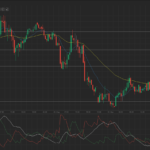 Both West Texas Intermediate and Brent benchmarks settled the week lower as upbeat economic data from the US raised speculations policy makers may curb Feds stimulus at FOMCs meeting next week, while a report by the EIA suggested lingering demand for fuel in the worlds top consumer. Indications that diplomatic progress is being achieved between Iran and the US on curbing the Persian Gulf nations disputed nuclear program and expectations for a reopening of three Libyan ports on Sunday further weighed on prices.
Both West Texas Intermediate and Brent benchmarks settled the week lower as upbeat economic data from the US raised speculations policy makers may curb Feds stimulus at FOMCs meeting next week, while a report by the EIA suggested lingering demand for fuel in the worlds top consumer. Indications that diplomatic progress is being achieved between Iran and the US on curbing the Persian Gulf nations disputed nuclear program and expectations for a reopening of three Libyan ports on Sunday further weighed on prices.
On the New York Mercantile Exchange, WTI crude for delivery in January fell by 1.04% on Friday to $96.49 per barrel. Prices shifted in a days range between $97.61 and $96.27 a barrel. The US benchmark touched a five-week high of $98.75 but edged lower going through the week and settled the five-day period 1.3% on the downside.
Meanwhile on the ICE, Brent futures for settlement in the same month rose by 0.15% to $108.84 per barrel on Friday. Prices ranged between days high and low of $108.98 and $108.04 per barrel. The European benchmark fell by 0.9% on Thursday and settled the week 2.6% lower. Brents premium to its US counterpart was at $12.35 on Friday, up from $11.06 in the previous day.
A recent series of upbeat economic data from the US reinforced speculations the Federal Reserve might begin scaling back its monthly bond purchases at FOMC’s meeting next week. Meanwhile, the market remained pressured after the Energy Information Administration reported on Wednesday that US motor gasoline and distillate fuel inventories jumped much more than expected, indicating lingering demand in the US.
Speculations for an earlier-than-expected tapering were reinforced on Thursday after the Commerce Department reported that retail sales rose solidly in November as Americans purchased automobiles and a range of other goods. Retail sales rose by 0.7% last month, beating analysts’ projections for a 0.6% gain, while October’s reading received an upward revision to 0.6% from initially estimated at 0.4%. The upbeat general indicator was lifted by a 1.8% jump in sales at auto and parts dealers, which offset a 1.1% decline in fuel prices.
Retail sales less autos, which exclude the volatile automobile sales, rose by 0.4% from an upward revised 0.5% a month earlier, exceeding expectations for a 0.2% advance.
Core retail sales, which exclude automobiles, food services, gasoline and building materials and correspond more closely to the consumer spending component of GDP jumped by 0.5% after advancing 0.7% in October.
The upbeat sales added to the steadily building-up positive sentiment for the US economic recovery, buoyed by a larger-than-expected third quarter growth and unemployment hitting the lowest level in 5 years.
The FOMC’s October meeting minutes pointed that Federal Reserve officials may reduce their $85 billion in monthly bond purchases “in coming months” as the economy improves. Central bankers are set to reconvene on December 17-18th.
The Federal Reserve may begin to scale back its $85 billion in monthly asset purchases at the committee’s policy meeting on December 17th-18th rather than wait until January or March, according to 34% of economists who participated in a Bloomberg survey on December 6th. In November’s survey, 17% of respondents projected a tapering in December.
Worse-than-expected annualized producer prices released on Friday shed some of the recently built concern for an earlier Fed tapering as inflation remained well below the official target and gave the central bank room to ease money supply. The numbers however couldnt shift the improved sentiment pointing at a highly probable bond purchases reduction next week.
Carl Larry, president of Oil Outlooks & Opinions LLC in Houston, commented for Bloomberg: “People are expecting that there will be tapering next week. You are seeing strong dollar and that putting pressure on commodities.”
Rising product inventories
The market also remained under pressure after an overall bearish EIA inventories report indicated soft demand in the world’s top consumer. The Energy Information Administration reported that total motor gasoline inventories rose by 6.7 million barrels last week, sharply exceeding the median estimate of analysts surveyed by Bloomberg News for a 2.0 million increase. At 219.1 million, supplies remained above the upper limit of the average range. Meanwhile, distillate fuel inventories jumped by 4.5 million barrels last week to 118.1 million but held in the lower limit of the average range. Analysts expected a moderate 1.18 million increase. This was the biggest gain in both the product groups since January 4.
Demand for gasoline fell for a fifth consecutive week to 8.35 million barrels per day, the EIA said, while total petroleum consumption slid 7.1% to 18.6 million bpd, the lowest since October 18.
Meanwhile, the report also showed a much steeper-than-expected withdrawal in crude supplies, which however was seen as an intentional depletion by refiners to avoid tax paying when they are assessed in January, implying demand was weaker than it seemed. The government agency said that crude supplies fell by 10.6 million barrels last week, beating analysts’ projections for a 3.0 million drop, but remained above the upper limit of the average range for this time of the year.
Stockpiles at Cushing, Oklahoma, the biggest U.S. storage hub and delivery point for NYMEX-traded contracts, jumped by 625 000 barrels to 41.2 million, the highest since July 26. Domestic crude production surged to 8.08 million barrels per day, the highest since 1988.
Gene McGillian, an analyst and broker at Tradition Energy in Stamford, Connecticut, said, cited by Bloomberg: “Demand is weak and if we don’t see it become stronger, the market will come under pressure. Products are being put into storage, basically driving the market lower. The market is concerned about Fed tapering.”
According to the majority of participants in a weekly Bloomberg survey, WTI will decline through December 20. Sixteen out of 31 analysts and traders wagered that prices will drop.
OPEC members
The oil market, and especially the Brent benchmark, was further pressured on expectations that three Libyan export terminals will be reopened in the weekend, lifting its shipments from the current 110 000 bpd level.
Brigadier Idris Bukhamada, the head of the Petroleum Facilities Guard, said for Bloomberg on Tuesday that Ibrahim Al Jedran, a former regional PFG commander whose men shut off five terminals starting July 28, agreed to the resumption after intervention by the Al Magharba tribe.
Libya’s Es Sider and Ras Lanuf ports, with a combined capacity of 600,000 barrels a day, and a third terminal, Zueitina, will come back online on Dec. 15, Bukhamada said.
Also weighing on the market, President Barack Obama’s campaign for Congress to refrain from introducing new sanctions against Iran won key support as the chairman of the U.S. Senate Banking Committee rejected tightening measures against the Persian Gulf nation, a sign the implementation of the deal is achieving progress.





